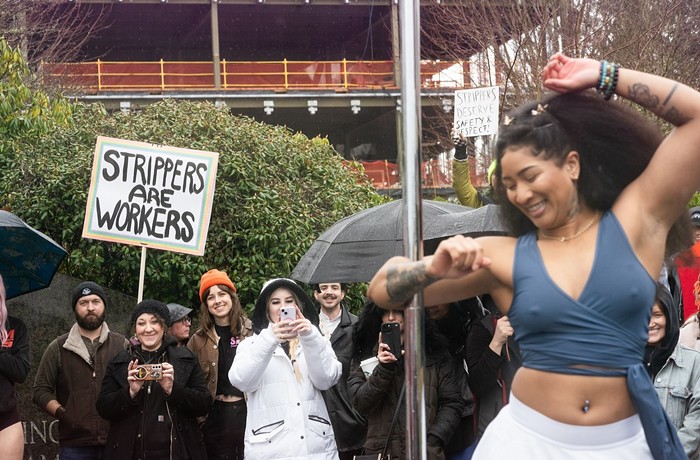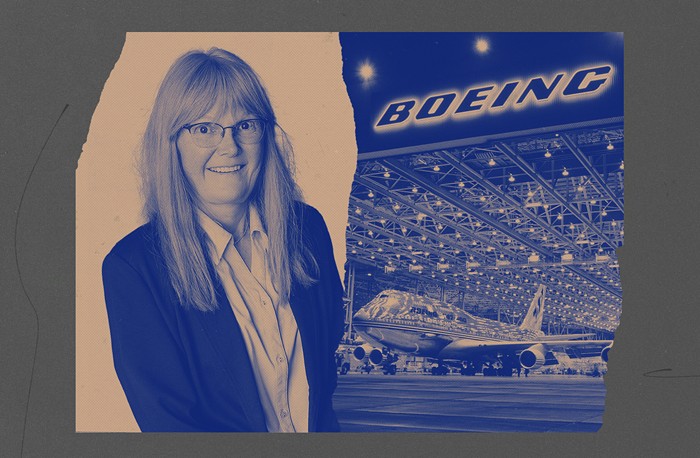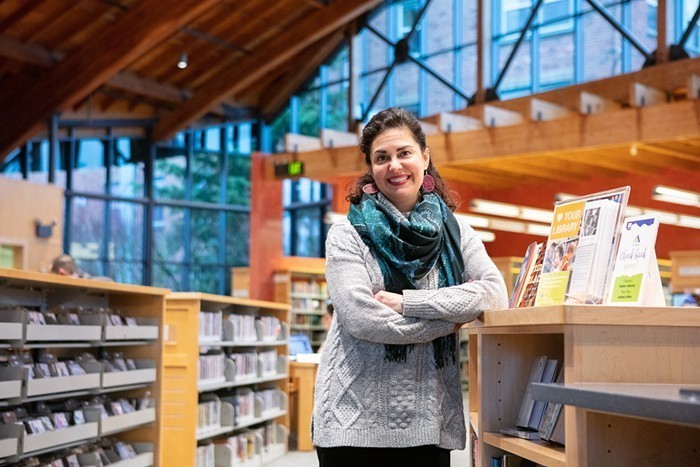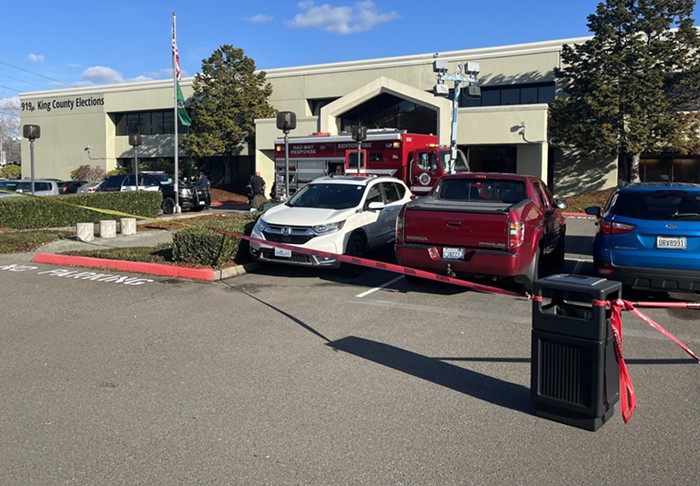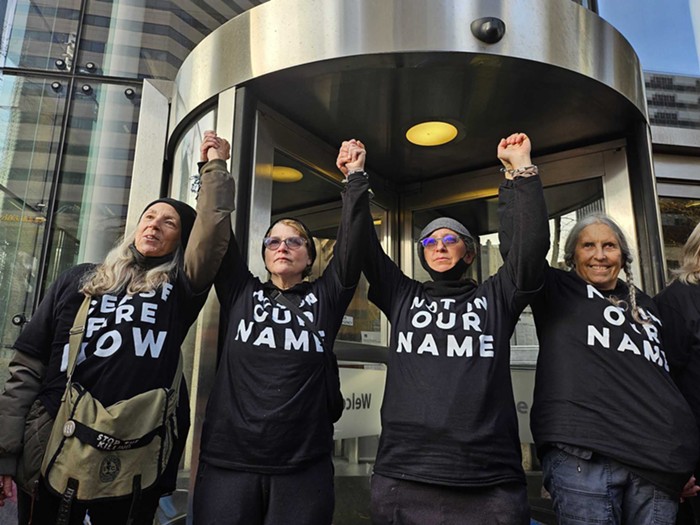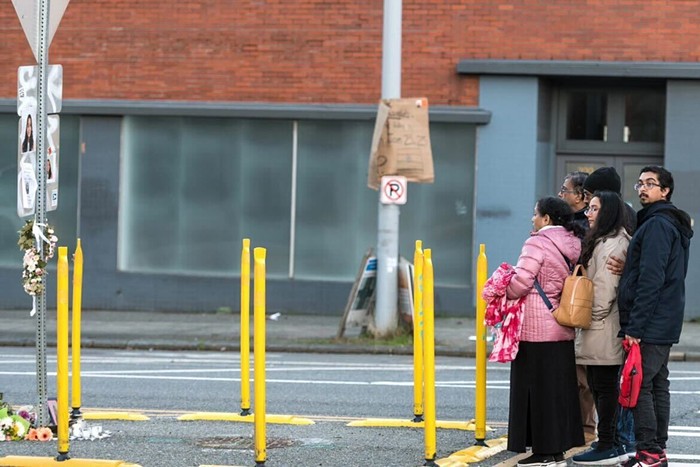From the beginning of Seattle's protests against what's going on in Ferguson, Missouri, there have been some ideological tensions—particularly between those brought into the streets by Ferguson specifically and those who see Ferguson as a means to a prescribed revolutionary end.
For example, on the night of November 24, after the Ferguson grand jury's decision not to charge Officer Darren Wilson in the shooting death of Mike Brown, a freshman at the University of Washington's Tacoma branch named Fadumo Abdirahman joined a march that began at Westlake Park and wound through Capitol Hill and the Central District. Along the way, he noticed the anarchists and revolutionary communists in the crowd. "I don't know if they all care about the case," Abdirahman remarked, "or if they're just here for their own causes."
Four days later, at a protest timed to coincide with Black Friday, a man calling for police body cameras—a technological intervention, not a popular revolution—said he'd been arguing with some of the anarchists earlier in the march. "For me and my little brothers, it's life or death," he said. "I have little nephews, too. I said, 'For you, maybe it's ideological, high-minded stuff. But for me, it's death.' A cop could shoot me and go home and have dinner. His career would be fine, but my life is done."
And then there was what happened around a gray dumpster on Union Street, between Boren and Terry Avenues, during the Black Friday march. After police used "blast balls and sting balls" to try to keep marchers from returning back downtown from Capitol Hill for Westlake Center's tree-lighting ceremony, protesters wound up on Union Street searching for a way around the police lines. Soon a loud argument about tactics erupted, as men dressed in black and wearing black bandanas tried to roll out the dumpster for use in confronting police, who were downhill from them at that point. Seeing what was about to happen, a woman of color yelled at them to stop, and kept on yelling. The men eventually did stop, but she and her friends soon left the protest in disgust, saying they didn't want to be blamed for stuff like this and it would reflect badly on everyone.
In the days after that protest—which was called #BlackLivesMatterFriday—Mohawk Kuzma, one of the main organizers for Seattle's "Justice for Mike Brown" movement, had to make clear that his group was not affiliated with local anarchists (whose November 25 march on Capitol Hill left broken windows in its wake) or with the Revolutionary Communist Party, USA. (That's the political group behind all the Revcom.us posters that popped up early in Seattle's Ferguson protests.)
Kuzma is 24 years old, he describes himself as "mixed—half African American and half white," and he says he got into activism after the 2010 killing of Native American woodcarver John T. Williams by Seattle police officer Ian Birk. (The SPD's Firearms Review Board ruled that shooting unjustified.) "They're trying as hard as they can to co-opt the Justice for Mike Brown movement," Kuzma told me, speaking of the RCP. In response, Orpheus Reed, a writer for the RCP's newspaper, Revolution, told me: "It's frankly ridiculous to be accused of co-opting actions that you were a part of calling and organizing."
In terms of aims, Kuzma is part of what he calls "a community of people wanting justice for Mike Brown." On Black Friday, that meant sending the message that black lives are "more important than shopping and getting the next great deal." But more broadly, it means "no police immunity" and standing "against racial oppression, racism, and police brutality." When he talks about justice for Mike Brown, he's talking about improving American democracy so that no one is above the law, and no one is beneath the law. In other words: equal justice under the law.
It's impossible to conduct a complete census in the midst of roving protests involving hundreds of people, but it seems clear that Seattle's response to Ferguson has become—in addition to everything else—a mix of competing ideologies with very different endgames. Still, most of the time they manage to coexist. At another Ferguson protest on December 1 that wound peacefully from Westlake Center to Capitol Hill, and then back down to Westlake, Jorge Torres, a member of the International Socialist Organization, held a megaphone to make sure others could speak. "I think it's more important for people to come into a sense of their own power," he said. ![]()
Ansel Herz and Brendan Kiley contributed reporting.


